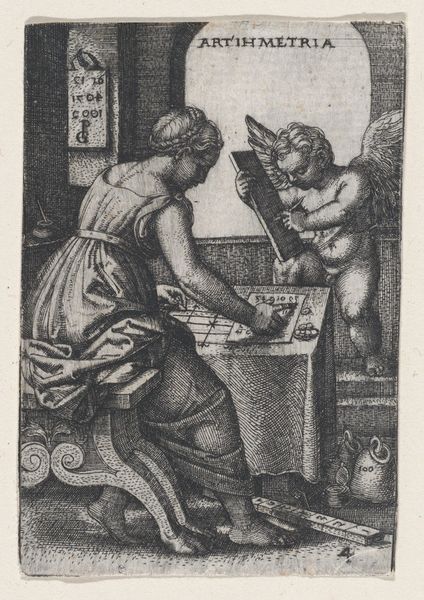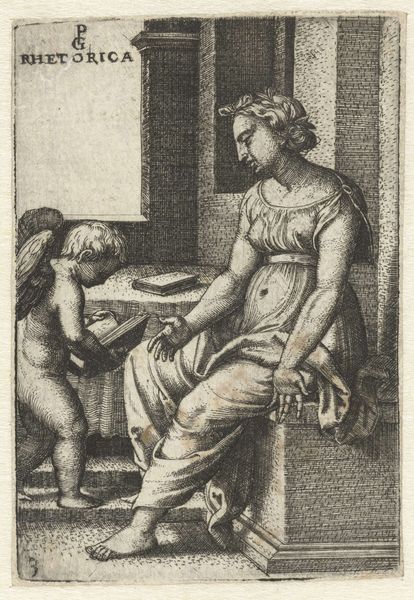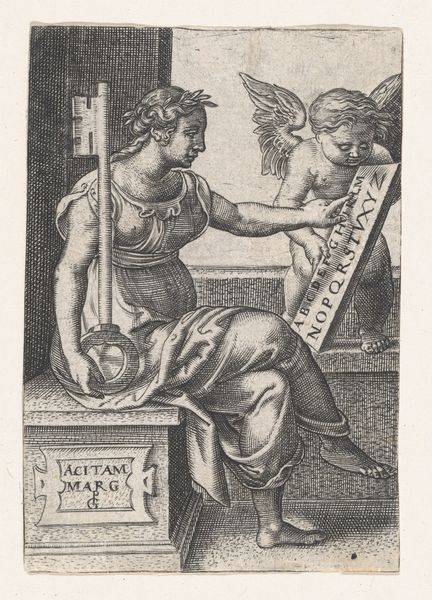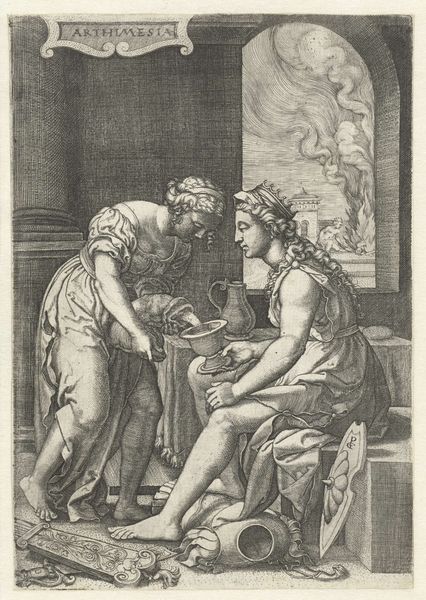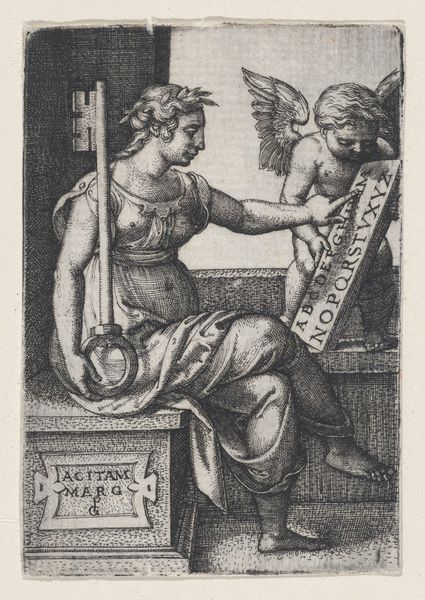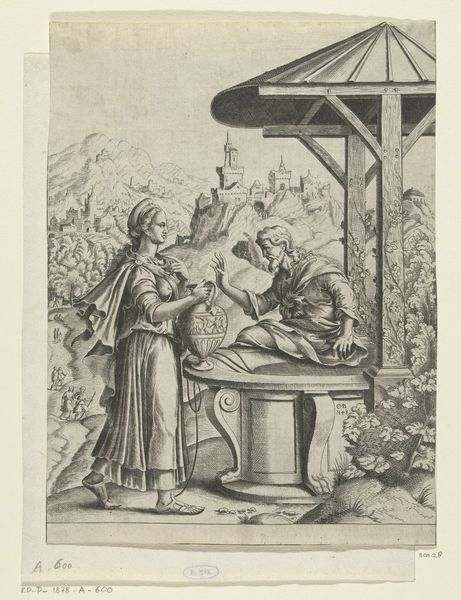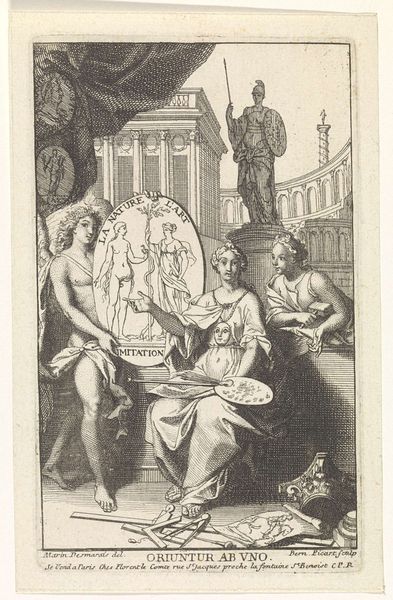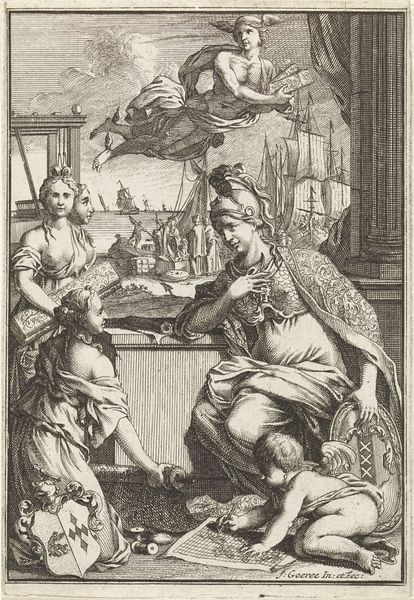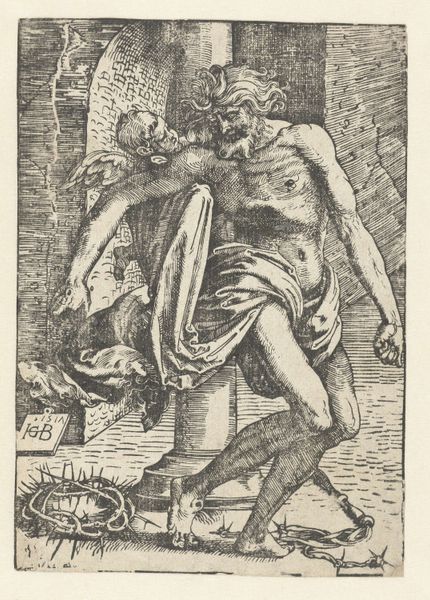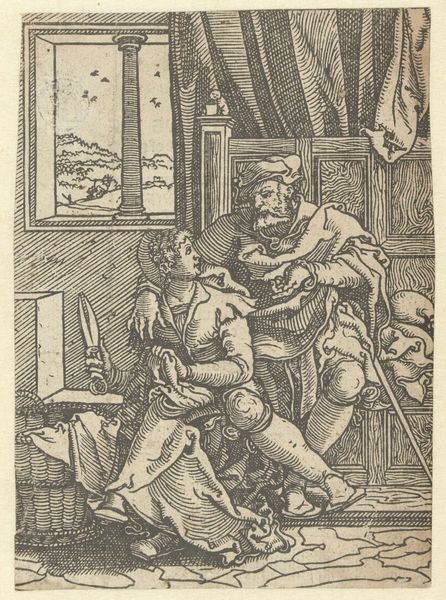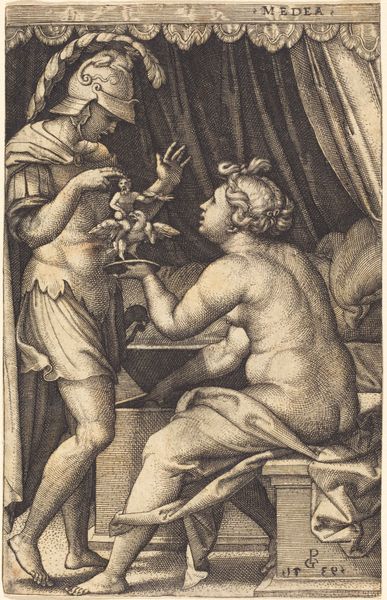
drawing, print, etching
#
drawing
#
allegory
# print
#
etching
#
old engraving style
#
figuration
#
11_renaissance
#
geometric
#
northern-renaissance
Dimensions: height 74 mm, width 52 mm
Copyright: Rijks Museum: Open Domain
Georg Pencz etched this small plate called "Rekenkunde," or Arithmetic, sometime in the first half of the 16th century. The figure of Arithmetria, adorned with a wreath, sits calculating at a table, assisted by a winged putto diligently writing on a tablet. The grid on the table, along with the counting board at her feet, roots us in the burgeoning world of early modern commerce and accounting. Yet, the figure of Arithmetria evokes something more ancient: the Greek goddess Harmonia, who embodied mathematical proportion as a cosmic principle. This link stretches back even further, to the Babylonian scribes who first etched cuneiform symbols into clay tablets, cataloging the world with numbers. These symbols have continued to evolve, shifting and reforming across the ages. Arithmetria's intense concentration is a powerful force, engaging us on a deep, subconscious level. It echoes in the solitary scholar, the meticulous artisan, and the modern accountant, all striving to bring order to the world through the power of numbers.
Comments
No comments
Be the first to comment and join the conversation on the ultimate creative platform.
